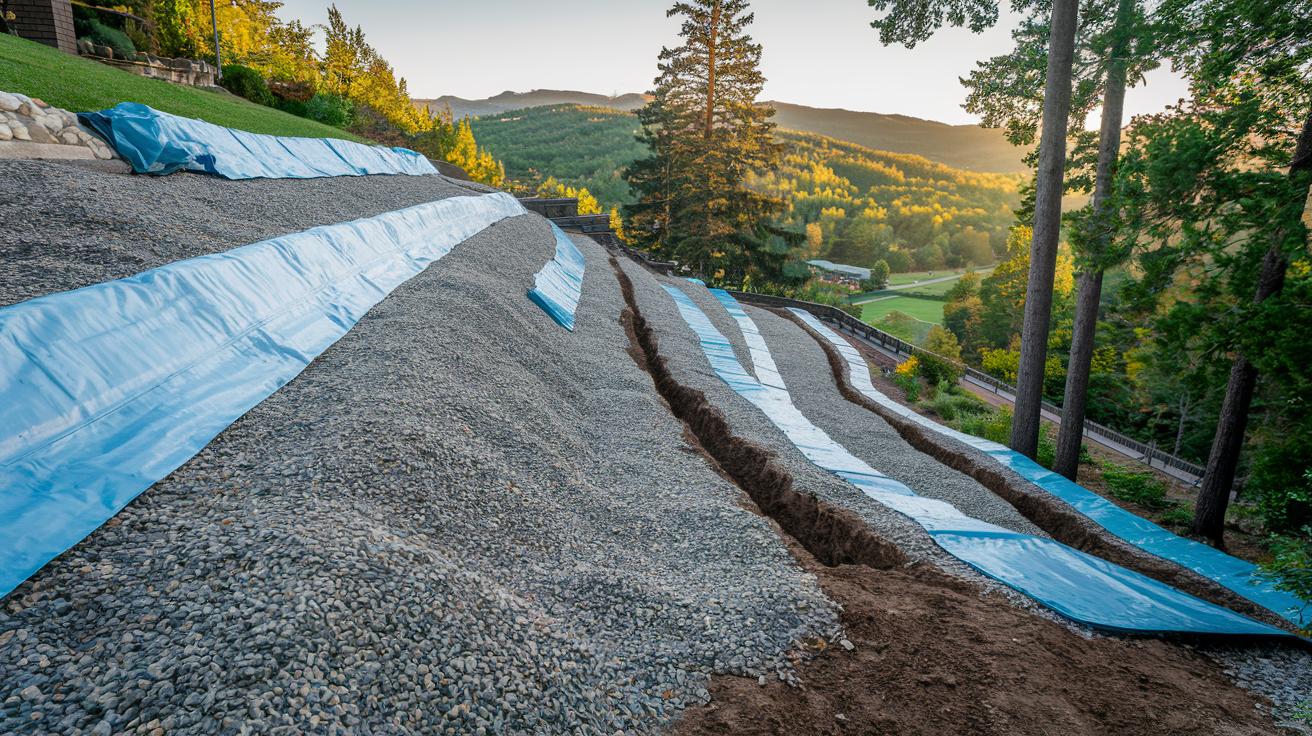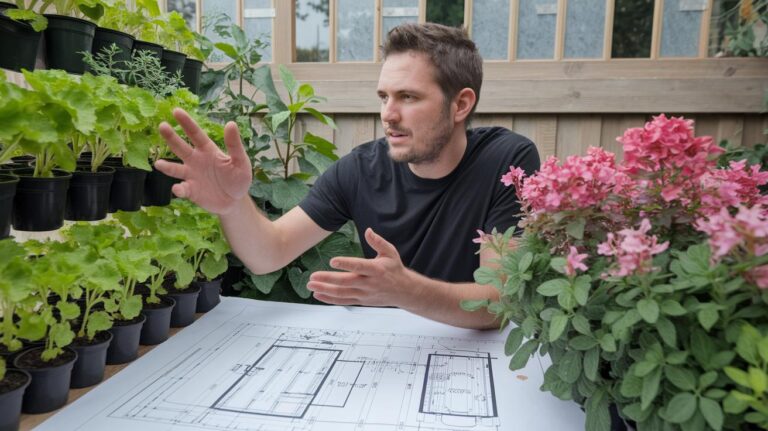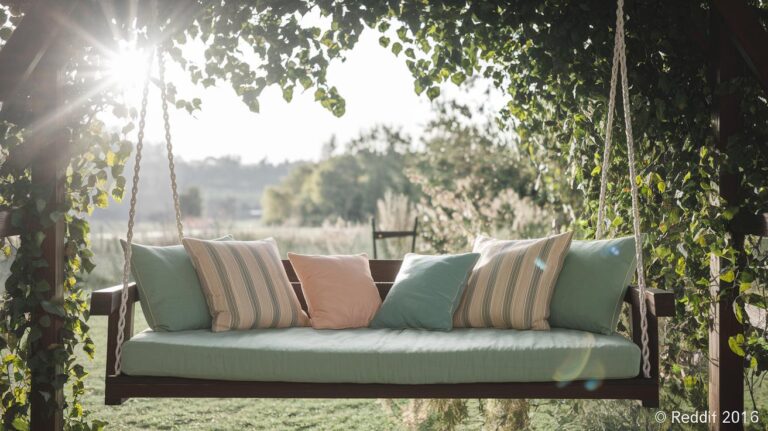Sloped Backyard Landscaping Ideas: Amazing Terraced Oasis
Have you ever looked at your backyard’s steep slope and thought it was a lost cause? I did too. But picture stepping outside to layers of green plants warmed by the morning sun, cozy bench corners, and a rock garden that glints with dew. Wow.
Terracing (cutting flat steps into a slope) isn’t just for fancy landscapes. It stops erosion (when rain washes soil away), gives you more room for chairs or planters, and has a simple, natural look. And it’s a project you can tackle on a tight budget.
In this post, we’ll walk you through easy, wallet-friendly sloped backyard landscaping ideas to carve shelves into your slope. You’ll see how to mix your soil, plant bright flowers or herbs, and stack up retaining walls (short walls that hold back soil) that look like gentle staircases. By the way, my dog Max loves to sniff around the new terraces. Grab a shovel, and let’s get our hands dirty.
By the end, your slope will feel like a terraced oasis you can’t wait to show off.
Sloped Backyard Transformation Strategies: Turning Uneven Terrain into Usable Spaces
Ever looked at your sloped backyard and wondered how to make it work? Let’s chat about a few friendly fixes that turn that hill into your favorite hangout spot.
First up: decks. Picture a flat deck just above your slope where you can sip morning coffee. You’re setting level posts (vertical supports), pouring concrete footings (solid ground anchors), then installing joists (beams that hold the deck boards). Plan on $5,000–$15,000 for posts, pads, and railings. You’ll need moderate DIY skill, you’ll learn some tricks as you go, I promise.
Next, try a rock garden. Grab a wheelbarrow and shovel. You’ll dig pockets in the hill, fill them with soil, then tuck in alpine plants that love good drainage (water flow). A small rock bed runs about $500–$2,000. Minimal machinery needed. By the way, my cat naps on a sunny chunk of rock, cute, right?
Retaining walls carve your slope into easy-to-manage shelves. Think of them as steps you can plant or sit on. You can pick concrete blocks, natural stone, or timber kits. Materials usually cost $20–$50 per square foot. Single-layer walls with interlocking blocks and gravel backfill (gravel behind the wall for support) are a great newbie project. If you’re up for multi-tier terraces, anchoring soil and stacking several levels, budget $1,000–$4,000 and some intermediate skill.
| Strategy | Cost | Skill Level |
|---|---|---|
| Deck (posts, footings, joists) | $5,000–$15,000 | Moderate DIY |
| Rock Garden | $500–$2,000 | Beginner |
| Single-Layer Retaining Wall | $20–$50 per ft² | Beginner |
| Multi-Tier Terraces | $1,000–$4,000 | Intermediate DIY |
Finally, don’t forget drainage. Good water flow stops erosion. A French drain (a trench with pipe and gravel) or simple weep holes cost $300–$800. Then top off with artificial turf at $5–$10 per square foot or gravel at $1–$3 per square foot. The turf feels like soft grass underfoot, and gravel makes a nice crunch when you walk.
So there you go, decks, rocks, walls, and drains. Mix and match these ideas, and your hill becomes a series of cozy garden levels ready for planting, seating, or play. Explore more backyard landscaping ideas.
Retaining Walls & Terraced Garden Layouts for Sloped Backyard Success
Building a solid wall is easier than you think. You get to tame your hillside and carve out flat spots for veggies or flowers. Let’s walk through the steps like neighbors chatting over the fence.
- Mark your wall line on the ground. Then dig a trench (a long, narrow ditch) below your local frost depth (how deep the earth freezes).
- Pour in 4 inches of crushed gravel backfill (small stones that fill space behind the wall) and press it down until it feels firm under your boots.
- Place your first row of blocks on that packed base. Tap each one so it sits perfectly level.
- After two or three rows, roll out geogrid (reinforcement fabric) up the slope and smooth it flat, like a garden blanket.
- Slip in a perforated drainage pipe (a pipe with tiny holes that let water escape) behind the blocks. Cover it with gravel, then fill the rest with soil.
Have you ever smelled fresh earth? That’s when you know you nailed it.
Retaining Wall Bench Seating Combo
Want your wall to pull double duty – holding back soil and giving you a spot to sit? Here’s how:
- Aim for an 18 inch seat height and a 16 inch depth. It feels comfy for most people.
- Bolt steel brackets into the hollow cores of the blocks or into timber beams using outdoor-grade anchors.
- Brush on a weatherproof finish to protect the wood or stone from rain and sun.
- Top it off with all-weather cushions so you can relax and enjoy the view.
By the way, my cat loves napping on mine. But back to you, this bench is about to become your favorite garden hangout.
DIY Sloped Backyard Leveling and Erosion Control Techniques

Hey there! Got a sloping backyard? Let’s tame that hill together. We’re going to smooth out that slope while keeping rainwater from turning it into a muddy mess.
Picture your yard like a sponge. Gravel and sand press out extra water so it doesn’t puddle up and cause ruts. You’ll get a gentle incline for planting that stays put.
For slopes up to three to one, lay geogrid (strong plastic mesh under soil) to hold soil layers together. Then roll out erosion-control fabric (special cloth that stops dirt from washing away) on spots that tend to slip.
You only need a shovel, a level, and some grit for this fix. Dig a trench. Nestle a slotted pipe in gravel (that’s a French drain, a gravel-filled trench with a slotted pipe). Watch rainwater turn into a slow, steady trickle. Oops, I spilled gravel once by accident, but it still worked!
Here’s what you’ll need:
- Lay 2 to 3 inches of gravel or sand. Pack it down with a hand tamper (heavy tool for pressing soil).
- Dig contour trenches, insert a perforated pipe, then backfill with gravel. This channels water away.
- Roll out erosion-control fabric (cloth that holds soil) over bare spots. Secure the edges with landscape staples.
- Place geogrid (strong plastic mesh under soil) beneath topsoil and anchor it with spikes.
- Spread mulch or small stones. Plant a fast groundcover (quick-growing plants) to lock soil in place.
Let everything settle overnight. Then walk the slope with your level.
This low-cost fix gives big peace of mind.
You’ll love seeing that once-loose hill stay put.
Now you’re ready for flowers, veggies, or a cozy bench.
Sloped Decks & Hardscape Structures
Platform Foundations & Lighting
On a sloped yard, you need strong anchors for your deck. Use 6-by-6 pressure-treated wood for the vertical posts (structural deck supports). Dig each post hole below the frost line (deepest soil freeze) and pour at least 12 inches of concrete footing. And if your yard dips more than a few inches, adjustable platform decking kits act like extra-tall legs, just clamp the brackets to your posts, level the frame, and lock it down.
Once your frame feels rock solid, let’s add some soft light. Low-voltage fixtures tuck into railing post bases or stair risers (step fronts) for a cozy glow. Solar deck lights snap onto joist ends (horizontal beams) so you skip the wiring. Oops, I once forgot to tighten a light bracket and it wobbled every time my grill door slammed. But a quick torque fix had it shining steady all evening.
Integrated Seating Modules
Who doesn’t love a built-in bench on the deck? Prefab bench modules bolt right to your joists (horizontal beams) at the standard seat height of 18 inches, just right for most adults. First, install steel brackets into the joist bays (spaces between beams). Then screw the bench frame on with outdoor-grade screws. Use weather-resistant wood or composite boards to stop decay in damp months. Finish with all-weather cushions so you can lean back, feel the warm sun on your shoulders, and listen to the birds chirp.
Stairways & Pathways on Slopes
Building stairs on a slope starts with a firm gravel base. Dig each step spot, pour in 3–4 inches of crushed stone (small rock), and tamp it until it feels solid underfoot. Then set your stone steps or slip-resistant pavers (flat stones) on top. Aim for a riser (step height) around 6 inches and a step surface at least 12 inches deep. Edge restraints along the sides keep everything from wandering off.
For winding pathways, mix permeable pavers (stones that let water through) with gravel in the joints so rain can soak right in. Line both sides with metal or plastic edging to hold it all tight. I once laid a curving path through my backyard and loved the gentle crunch under my boots, it felt like a secret garden on a sunny afternoon.
Sloped Backyard Planting on Gradients: Groundcovers, Shrubs, and Trees
Planting on a slope? It’s like a gentle challenge. You need plants that’ll hug the hill and won’t slip away. Groundcovers (low plants that spread like green blankets) are the heroes here. They hold soil in place so rain can’t wash it down the hill.
By the way, periwinkle (creeping myrtle) loves full shade. Just pop it under trees or next to your shady patio. And in spots with sun or part shade, try vinca minor. It’s tough and makes a happy home for bees and little critters.
Next, add ornamental grasses (grasses grown for looks). Feather reed grass stands tall, its stalks whispering in the breeze. Blue fescue brings a quirky tuft of blue-green. Those roots slow water as it heads downhill, giving you fewer puddles.
For pops of color and extra grip, plant lavender (droughtproof shrub). It thrives on sunny, rocky slopes. And don’t forget dogwood (small tree with shallow roots). It spreads roots wide to anchor the earth. Oops, I almost forgot frost lovers, pansies. They’re frost-resistant and brighten up early-season terraces.
| Plant | Light & Soil | Water |
|---|---|---|
| Periwinkle | Full shade; well-drained soil | Moderate |
| Vinca minor | Sun to part shade; loamy soil | Low |
| Feather reed grass | Full sun; sandy soil | Low |
| Blue fescue | Full sun; gritty soil | Moderate |
| Lavender | Full sun; rock or sandy soil | Low |
| Dogwood | Part sun; moist but well-drained soil | Regular |
Want more life? Sprinkle in coneflowers or milkweed to invite butterflies. It’s so nice to watch them float through your terraced paradise.
Now, are you ready to turn that slope into a sun-dappled, pollinator-friendly haven? Let’s do this!
Sloped Backyard Rock Garden Placement and Water Features

Rock gardens hold soil in place on steep slopes. You pile in boulders (large rocks) and lay down gravel (small stones) that soaks up rainwater. Then you carve out pockets for succulents (plants that store water in their leaves) or alpine plants (mountain-loving plants). As you work you’ll hear the gravel crunch under your feet.
But clever placement does more than look good. It slows storm runoff and stops precious topsoil from washing away.
You can stack modular landscape blocks to build neat terraces. Or snag a DIY kit from your local home center for smaller slopes. Oops, I knocked a pebble loose.
For those giant boulders you’ll need a mini excavator or some heavy equipment. It’s like sculpting your own little mountainside.
Adding water brings a calm vibe. Tiered mini waterfalls or solar-powered fountains let water trickle down each level and give your plants a little drink. The sound is like a soft whisper in your garden.
You can even tuck in hanging flower baskets that spill blooms over the stones for extra color and texture. Check out more rock garden ideas for styling tips.
Here’s how to blend rocks and water in four steps:
- Sketch your slope lines and mark spots for planting.
- Spread 2 to 3 inches of gravel, then set your biggest boulders first so they stay put.
- Fill gaps between rocks with soil (dirt mixed with nutrients) and plant your alpine greens. Top it off with more small gravel.
- Place your pump-driven or solar fountain at the top. Hide the tubing under gravel and test the flow.
This mix of rocks and water tames erosion while turning your slope into a peaceful terraced hideaway.
Sloped Backyard Budget Solutions and Low-Maintenance Hillside Tips
Steep hills can feel like a money pit. But that slope doesn’t have to drain your wallet or your energy. Imagine warm earth crumbling under your fingers, and a soft green carpet that never needs mowing or watering. Ever slipped on a muddy bank? Let’s fix that.
One easy trick is artificial turf (synthetic grass that stays green). It skips the mower and skips extra water. By the way, my dog naps on it all afternoon. Gravel mulch (tiny stones used as ground cover) works, too. It can sit pretty for three to five years with zero topping off, oops, I spilled a few pebbles myself at first.
If you love real grass, try a vertical push reel mower (a manual mower with spinning blades you push up and down). It feels steady on a steep grade and you’re not wobbling sideways. For watering, a low-flow drip irrigation system (tiny tubes that drip water right at the roots) saves time and cuts your bills. Or set up a rain catch basin (a container that holds roof runoff) so plants get just the sip they need.
Here are five budget-friendly hillside helpers:
- Artificial turf: no mowing and no extra water.
- Gravel mulch: no refills for years, and it drains rain without rotting.
- Vertical push reel mower: steady cuts on slopes.
- Low-flow drip irrigation: drips water at the roots, lowers your water bills.
- Rain catch basin: harvests roof runoff for thirsty plants.
Mix and match these ideas for your backyard. Soon you’ll have a tidy slope that feels like a cozy garden nook instead of a chore zone. Enjoy!
Sloped Backyard Fire Pits & Entertainment Zones
Fire Pit Areas on a Sloped Backyard
Pick a terrace (flat platform) on your sloped yard and clear a 3-foot zone around it for safety. Feel the warm earth under your fingers as you sweep away loose soil. Have you ever smelled that crisp evening air right before a backyard bonfire?
Lay pavers or cast stone blocks to build a sturdy pad. Then set your fire pit ring or bowl in the middle. Scatter a ring of gravel or decomposed granite (small crushed rock) at the edge to catch stray embers and keep the soil from burning.
Add low stone benches or weather-proof chairs right on that same pad. Arrange seating so everyone faces the crackling flames and feels the heat wrap around them. Toss in all-weather cushions for soft comfort and a cozy backyard-living-room vibe under the stars.
Oops, I once spilled a bag of gravel while setting mine up. It still worked great. Snap solar step lights onto terrace risers or stone steps. No wiring needed.
They cast a gentle glow so guests can find their way after dark and set a laid-back mood for late-night chats.
Final Words
In the action, we dug into five key strategies, decks, rock gardens, retaining walls, terracing, and drainage, to tame uneven ground.
We also covered planting picks, DIY erosion controls, and cozy fire pit spots, all with cost ranges and skill notes.
With these sloped backyard landscaping ideas, you’ve got a clear plan to carve out flat zones, boost greenery, and set up fun areas without endless chores.
Your sloped yard is set to shine!
FAQ
Frequently Asked Questions
What is the best landscaping approach for a sloped yard?
The best landscaping for a slope combines terraces or retaining walls with proper drainage, rock gardens, and raised decks, creating level areas that control erosion and boost usable outdoor space.
How can I make my sloped backyard more usable?
Making a sloped backyard usable starts with creating flat terraces using retaining walls or raised decking, adding level pathways and seating areas to turn hills into functional entertaining or gardening spots.
How do I landscape a slope on a budget?
Landscaping a slope on a budget means building simple terraces with gravel, using low-cost timber or block retaining walls, installing rock gardens, and choosing native groundcovers that limit erosion without heavy machinery.
What does it cost to fix a sloped backyard?
Fixing a sloped backyard costs vary by project: rock gardens run $500–$2,000; basic terraces $1,000–$4,000; decks $5,000–$15,000; retaining walls $20–$50 per sq ft; drainage systems $300–$800.
What are low-maintenance slope landscaping ideas?
Low-maintenance slope ideas include installing artificial turf, gravel mulch, low-water groundcovers like vinca or ornamental grasses, drip irrigation, and modular terraces to cut mowing, watering, and upkeep time.
How do you handle small or front-yard slopes?
Tackling small or front-yard slopes works by adding narrow terraces or tiered planters, dwarf shrubs along compact stairways, and permeable pathways to stabilize soil while boosting curb appeal and easy access.
What before-and-after transformations work for sloped backyards?
Before-and-after sloped backyard makeovers often add retaining walls or terraces, rock gardens in bare areas, layered planting on gradients, and a deck or fire pit on a new level platform.







